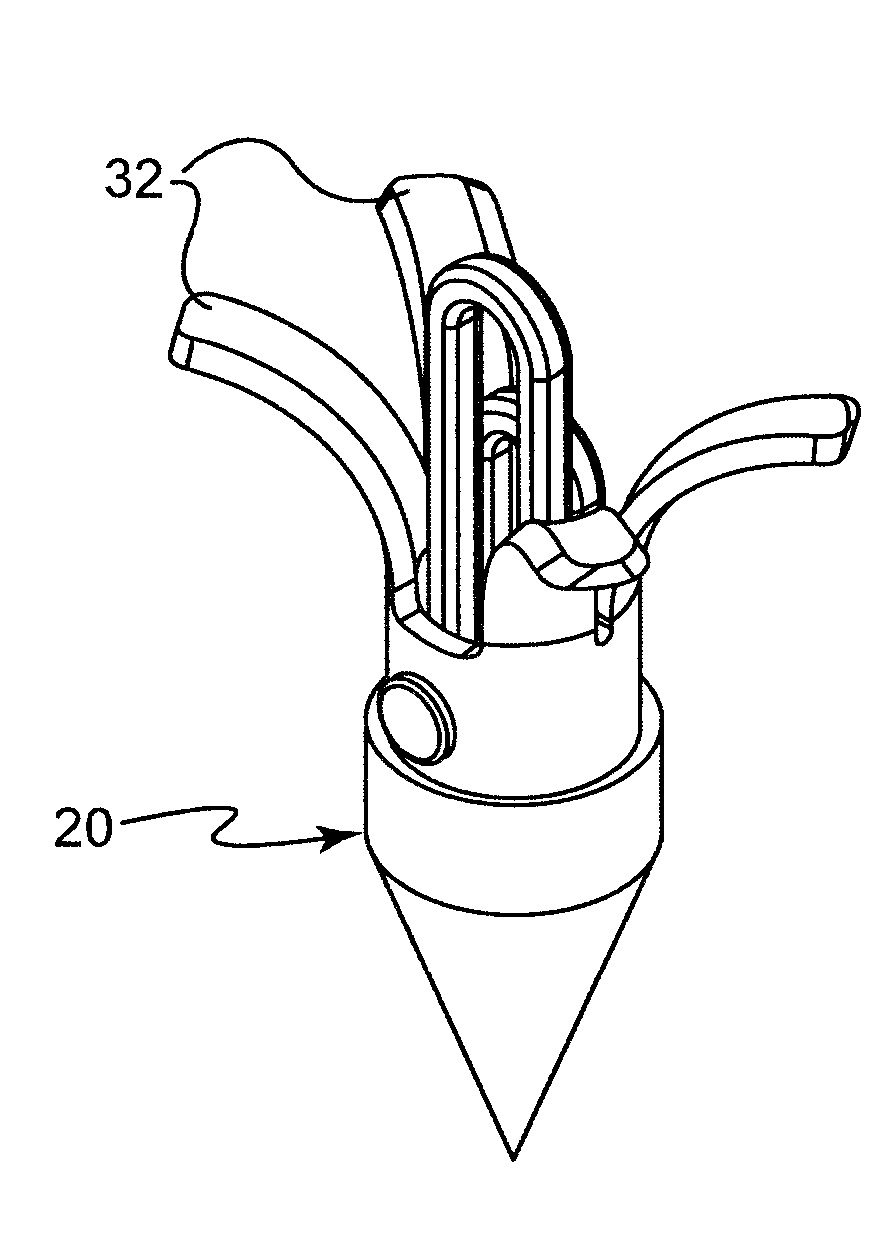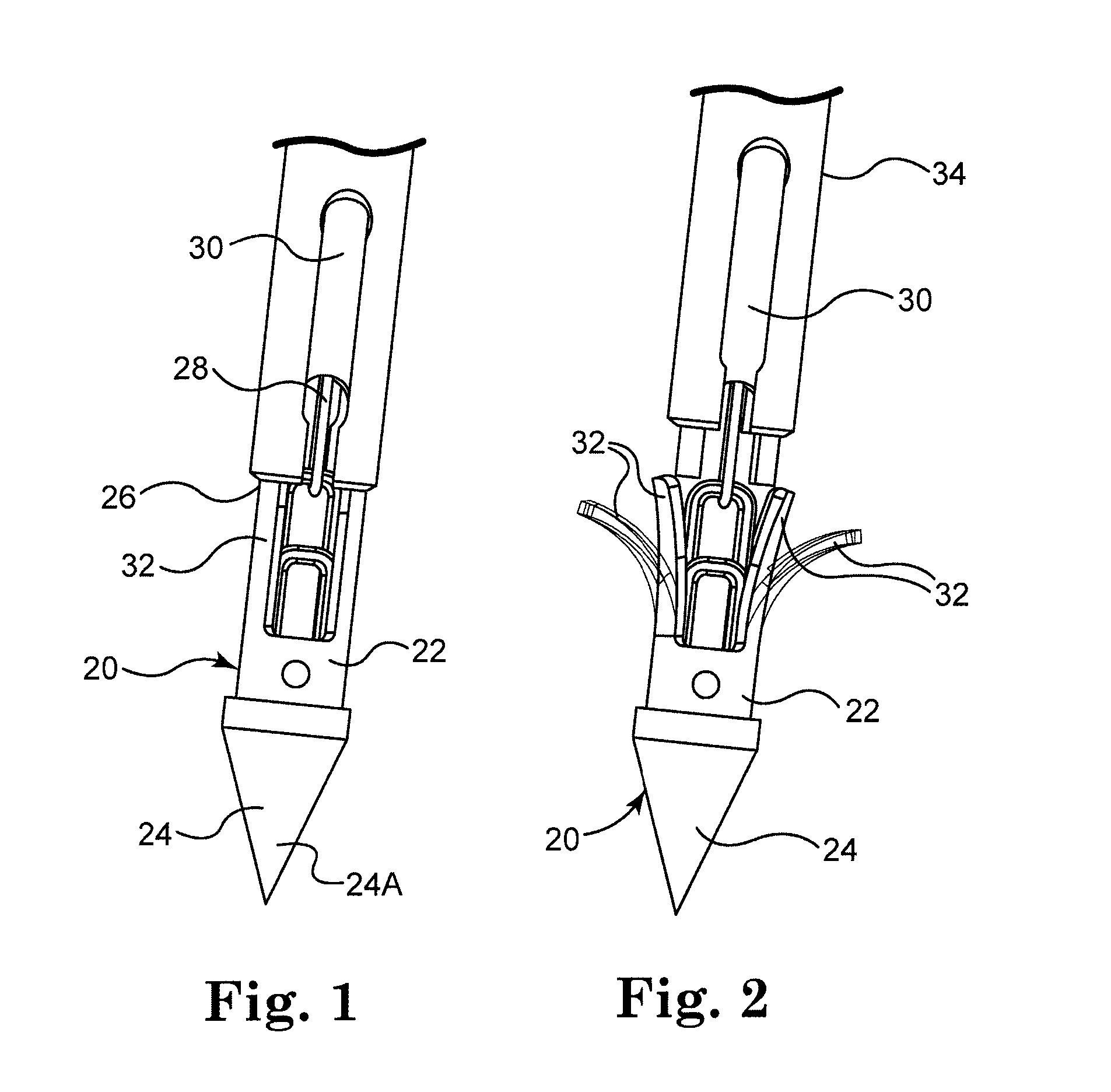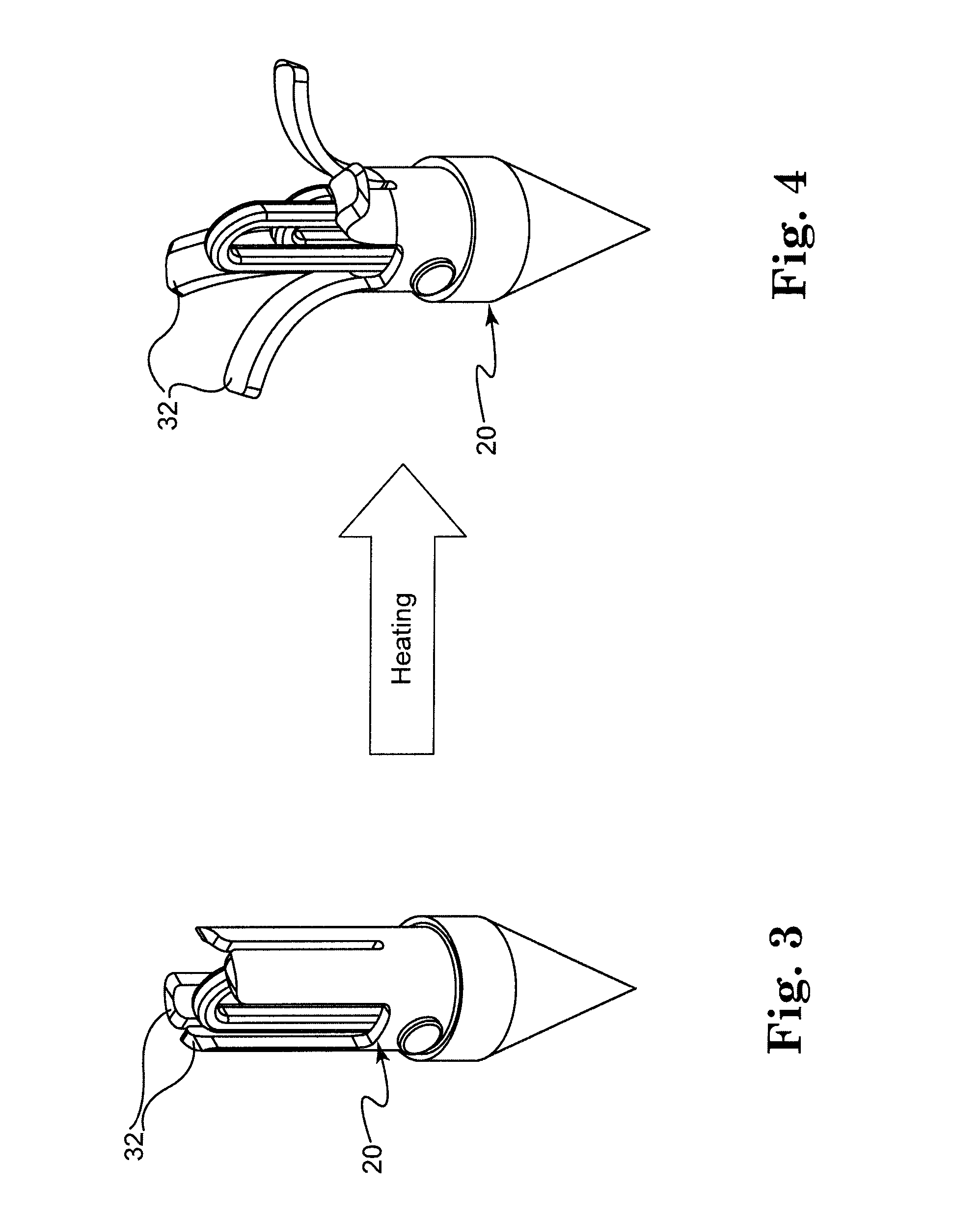Bone anchor comprising a shape memory element and utilizing temperature transition to secure the bone anchor in bone
a bone anchor and shape memory technology, applied in the field of surgical methods and equipment, can solve the problems of significant displacement or damage of the bone, requiring substantial effort to release the barbs from within the sheath, and limited application of nitinol technology for bone anchors, so as to reduce (or eliminate) load complications, reduce or substantially eliminate internal forces, and facilitate the loading of the barbed anchor into the sheath
- Summary
- Abstract
- Description
- Claims
- Application Information
AI Technical Summary
Benefits of technology
Problems solved by technology
Method used
Image
Examples
Embodiment Construction
[0034]The present invention is directed to a bone anchor that includes temperature-activated engagement elements formed from a shape memory metal, such as for example a NiTi material sold by NDC Corporation of Fremont, Calif. and designated SE 508 (50.8% Ni content). As used herein, “engagement elements” refers to a temperature activated, shape memory alloy structure adapted to retain a bone anchor in bone. The engagement elements can have a variety of configurations, such as for example, barbs, hooks, serrated or threaded members, and the like.
[0035]One preferred embodiment of the present bone anchor 20 is shown in FIGS. 1 and 2. The bone anchor 20 generally includes a body 22 having a distal end 24 and a proximal portion 26. Retaining structure 28 holds the proximal portion 26 in engagement with inserter 30. In FIG. 1 a plurality of shape memory alloy engagement elements 32 are in a retracted configuration. In FIG. 2 the engagement elements 32 are in a radially expanded configurat...
PUM
 Login to View More
Login to View More Abstract
Description
Claims
Application Information
 Login to View More
Login to View More - R&D
- Intellectual Property
- Life Sciences
- Materials
- Tech Scout
- Unparalleled Data Quality
- Higher Quality Content
- 60% Fewer Hallucinations
Browse by: Latest US Patents, China's latest patents, Technical Efficacy Thesaurus, Application Domain, Technology Topic, Popular Technical Reports.
© 2025 PatSnap. All rights reserved.Legal|Privacy policy|Modern Slavery Act Transparency Statement|Sitemap|About US| Contact US: help@patsnap.com



